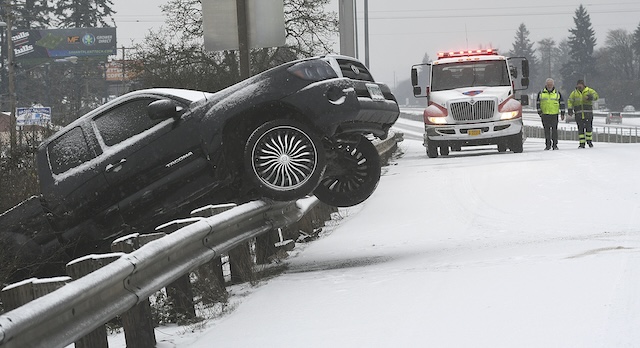Oregon’s Mariota Center offers recruits royal amenities
Published 11:32 pm Thursday, March 9, 2017

- stock ducks
Rumor has it the namesake of the Marcus Mariota Sports Performance Center has been spotted at the facility this winter, using the anti-gravity treadmills and other space-age technology to aid his recovery from a fractured fibula.
Rehabbing in a $19.2 million personal shrine has to be a bit surreal for Mariota, the self-effacing Heisman Trophy winner who just completed his second NFL season with the Tennessee Titans. But beyond its extravagant flourishes — including a back-lit display of Mariota’s face on the ceiling and a wall-sized mural of Sandy Beach, his favorite surfing spot in Hawaii — are a variety of practical functions, including six industrial washing machines and 21⁄2 miles of movable shelving.
The Mariota Center opened in August, but Saturday was the first time fans and media were allowed inside. Funded through the contributions of Nike co-founder Phil Knight, the facility encompasses 30,000 square feet inside the Casanova Center and has separate wings for sports science and equipment.
Like other projects funded by Knight, the Mariota Center is deliberately ostentatious, the centerpiece being a 450-pound throne where recruits sit while being fitted for Oregon gear.
“It took five men to move this in,” said Aaron Wasson, Oregon’s director of equipment operations.
The throne is part of a room called the Haberdashery, which is modeled after a London suit shop. Recruits enter to a display of Nike shoes and accessories, along with a video screen showing various uniform combinations.
Recruits are not allowed to keep the gear, though they can borrow apparel while they are visiting.
“We don’t give them footwear,” Wasson said. “A lot of kids coming from Florida aren’t prepared for the weather, so we’ll give them a jacket.”
Adjacent to the Haberdashery is a room called the Armory where equipment staffers assemble helmets. Frosted-glass windows turn opaque with the flip of a switch, preventing bystanders from leaking cellphone pictures of sensitive helmet designs.
A nearby warehouse area contains enough shoes, jerseys and athletic gear to stock a sporting goods store. When athletes come to request a shirt or a pair of cleats, equipment managers scan bar codes to track what has been checked out and to whom.
“It’s almost like a retail environment in here,” Wasson said.
Before the Mariota Center expansion, Oregon was using a 5,000-square-foot equipment area that was part of the original Casanova Center, which opened in 1991. At the time, Wasson said, standard issue for a football player might have been one helmet, one jersey, a pair of pants and a set of cleats.
With multiple uniform combinations came the need for a larger equipment space. The new area measures 15,000 square feet and eliminates the need for 10 shipping crates previously used to store excess gear.
“We quickly outgrew the 5,000 square feet,” Wasson said.
Sports science is the Mariota Center’s other focus, drawing on technology employed by NASA and a similar facility in Australia. There is a room devoted to neurocognitive analysis, complete with a space for concussion testing and virtual reality headsets that connect to ports in the ceiling.
In another room, cameras record a player’s movements and feed into a program that measures flexibility, looks for signs of injury and provides individualized training instructions. A scanner measures body composition, and force plates built into the floor tell players if they are at risk of a hamstring injury.
Connected to the existing weight room is a physiology area that includes a half-size boxing ring used for cardio — no sparring — and speed bags adorned with Mexican wrestling masks representing Pac-12 opponents. After a workout, athletes can relax on a massage table or nap in a sleep pod under a constellation of stars shaped like flying ducks.
Andrew Murray, Oregon’s director of performance and sports science, appreciates the subtle touches, including lights tuned to mimic the sun throughout the day and the “No Beavers” signs in the bathrooms. But if there is one thing that sets the Mariota Center apart, he said, it is the ability to collect and analyze unprecedented amounts of data about how athletes perform.
Players can access personal profiles on tablets attached to each workout station, allowing them to track every rep of every workout. Learning how to harness that data to create optimum performance is Oregon’s ongoing aim.
“There’s no point in collecting this data if you don’t use it,” Murray said.
Sports science is the Mariota Center’s other focus, drawing on technology employed by NASA and a similar facility in Australia.








